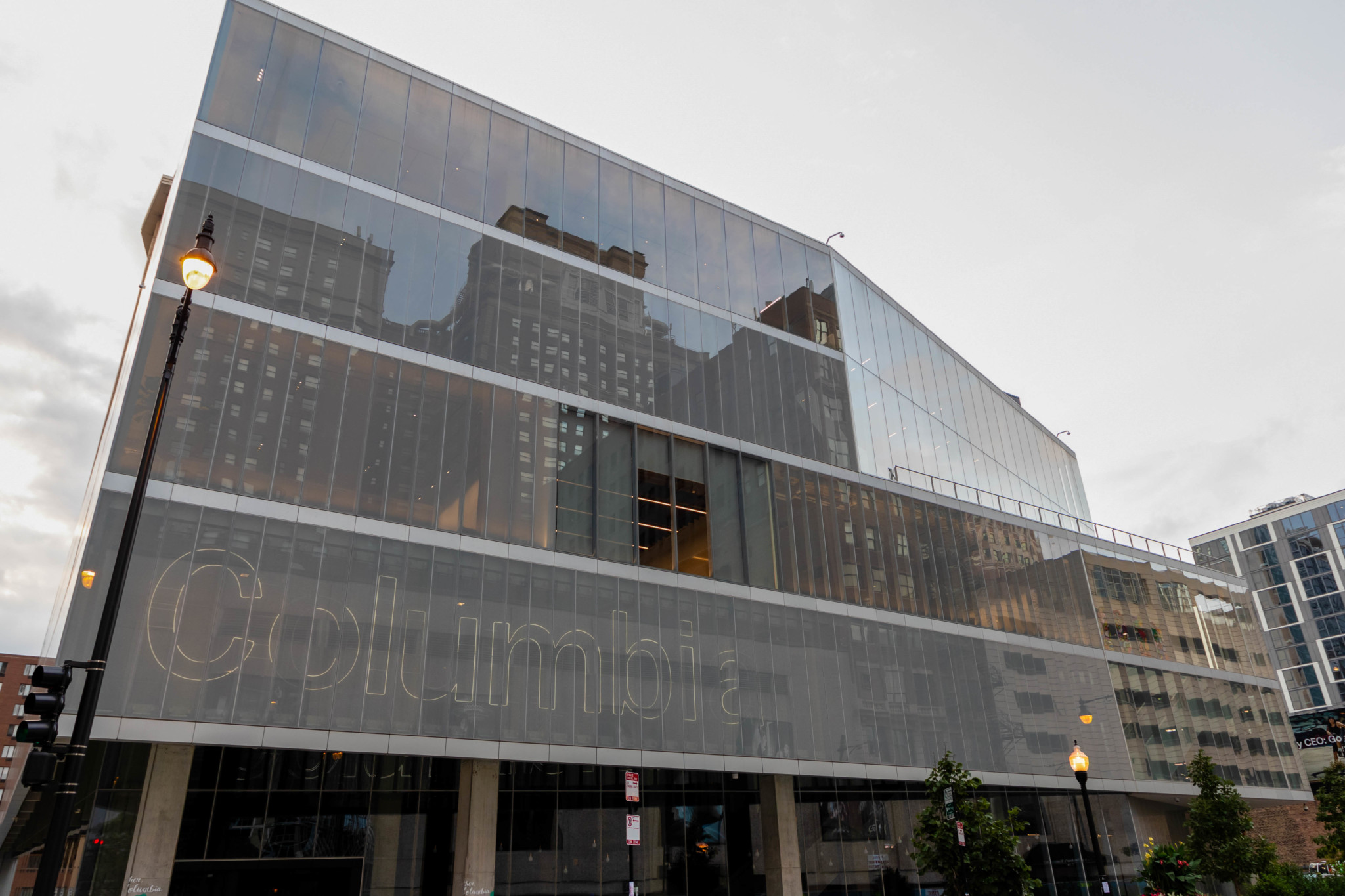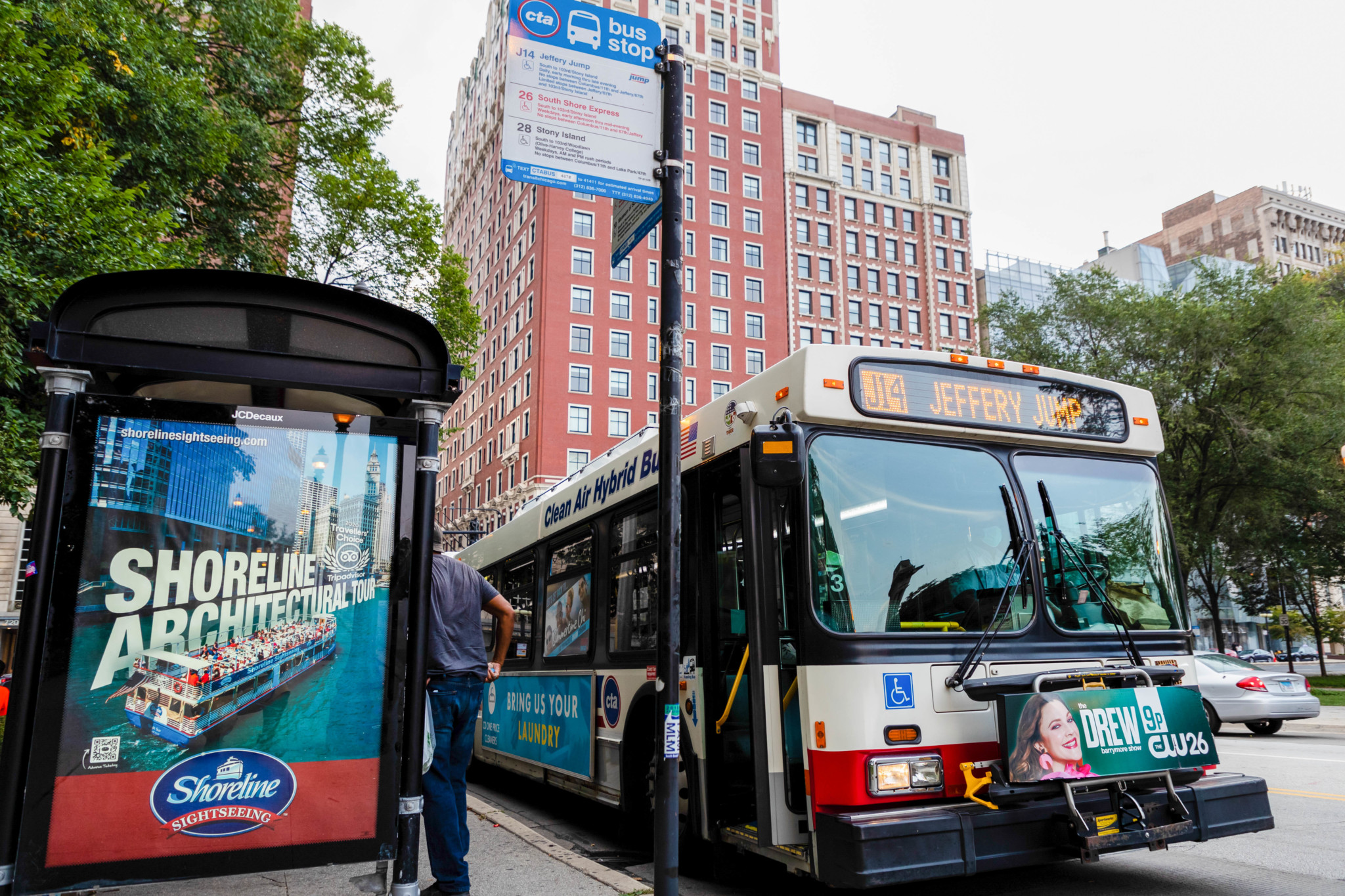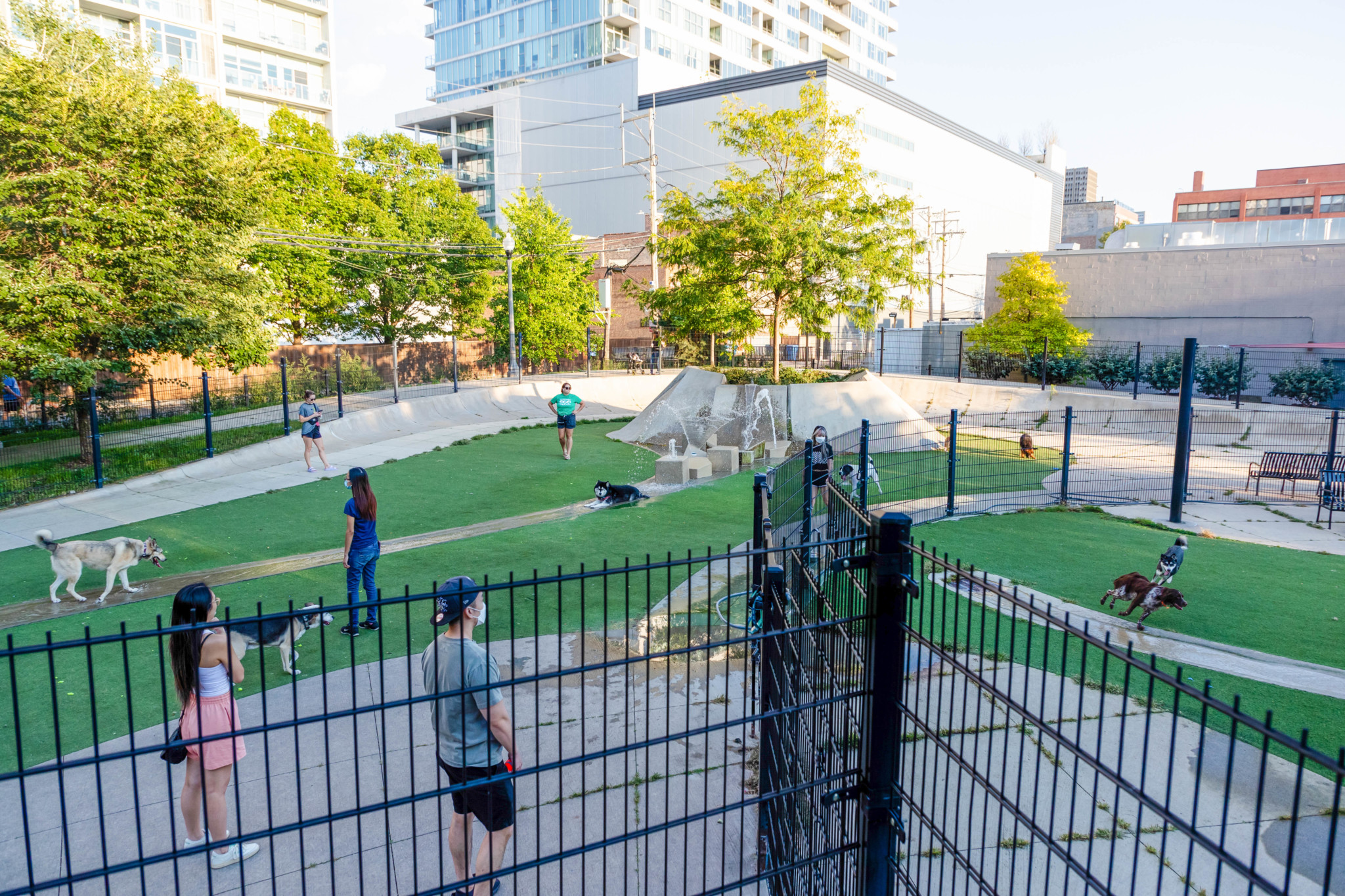- Best Park to Pet Dogs That Aren’t Yours
- Best Place To Cloud Watch/Best Hill To Roll Down
- Best New Student Center Made Mostly Out of Glass
- Best Spot to Catch the Bus Going South
This neighborhood has a history that is as old and as long as the railroads that run through it. South Loop, the doorway to the Loop for South Siders, is one of the city’s first residential districts, dating to before the Chicago Fire of 1871. The South Loop today is home to schools, colleges, and universities, three of the city’s largest museums, and some of the most popular restaurants and sights in Chicago. South Loop also holds Grant Skate Park, one of six skate parks in the city, and with its walkability and diverse transit options it has become a hub for the city’s youth. With so many points of interest in this neighborhood, the list of “bests” is endless. (Chima Ikoro)
Neighborhood captain Chima Ikoro is the community organizing editor at the Weekly.
Best Park to Pet Dogs That Aren’t Yours
Fred Anderson Park
When I first began school in the South Loop, I found myself exploring between classes. One day, as I wandered down Wabash, I passed what looked like the perfect, low-key spot to practice on my skateboard. Streaks of paved white paths, small steps, and cliffs woven between green patches of grass drew me towards this park. However, I didn’t practice a single trick. Instead, I was greeted by dogs running freely and playing. It was a dog park.
Fred Anderson Park is a 1.2-acre piece of the city that was acquired by the park district in 2015. This park is as human-friendly as it is dog-friendly, and is designed to accommodate all types of dogs and their specific needs. It has separate enclosed play areas for small and large dogs, and is riddled with tunnels and artificial turf, as well as fountains and strips of concrete that create mini water parks. There are also picnic tables, and while they’re designed for humans it’s not uncommon to see dogs standing and jumping on them as they play. The style of the park makes the environment extremely welcoming, and both pet owners and the canine-free congregate on warm days to play and chat. The dogs are sociable and excited and the friendly atmosphere makes it the perfect place to pet random dogs if you need a furry fix.
The park is named after the late Fred Anderson, who was a pillar of jazz music in Chicago and an internationally acclaimed musician. Anderson lived a few blocks from the park, and his famed club the Velvet Lounge, at 2821½ S. Indiana, welcomed musicians from around the world. The park features a small stage area for local artists to perform, a fitting legacy for a man who was a mentor to so many of Chicago’s young and up-and-coming musicians. (Chima Ikoro)
Fred Anderson Park, 1611 S. Wabash Ave. Daily: 6am-9pm. (312) 328-0821.
Best Place To Cloud Watch/Best Hill To Roll Down
The Great Ivy Lawn
The Museum Campus is home to some of the city’s largest museums and tourist attractions. The Shedd Aquarium, the Field Museum, and the Adler Planetarium sit majestically on this beautiful landscape accented with bright gardens and beds of flowers. The campus sits right on the lake, with panoramic views of both the skyscrapers and the water from the Lakefront Trail that wraps around the aquarium. There are, in short, so many reasons to visit this area, but there’s a facet of the Museum Campus that is often overlooked: the Great Ivy Lawn.
The Great Ivy Lawn stretches from the Museum Park pedestrian underpass across the width of the Field’s north-facing facade and up to the courtyard of the Shedd. Freshly cut grass ripples from top to bottom as the lawn cascades to the edge of the walkway that leads to the Lakefront Trail. It’s hard to imagine that a patch of grass could be so regal, but the Great Ivy Lawn is so well tended, it is easily the most comfortable place to relax between classes or on a lunch break. And unlike most things on the Museum Campus, the lawn is free to enjoy. All the greenery is a breath of fresh air after you’ve spent your day trapped within downtown’s concrete and buildings. The flowers and gardens that line the lawn attract butterflies and small critters that breathe life into this corner of the South Loop.
The perfect place to lay back and cloud watch, this spot is also great for a picnic, as long as you’re not bothered by the bees that keep the gardens lively. At the farthest end of the lawn is Kim and Carlo’s Hot Dog Stand if you’re craving an authentic, no-frills Chicago-style hot dog. More importantly, the Great Ivy Lawn’s gentle slopes and plateaus make it the best hill to roll down. As childish as that may sound, there’s no better way to release some positive energy and have a good laugh. (Chima Ikoro)
The Great Ivy Lawn, 425 E. Roosevelt Rd. Open daily 24/7.
Best New Student Center Made Mostly Out of Glass
Columbia College Student Center

Columbia College Chicago welcomed its first-ever student center in the fall of 2019, which was also my first year at the school. This building is five stories high and 114,000 square feet. In other words, it is a giant block of glass standing on the corner of 7th and Wabash. You absolutely cannot miss it. However, this building is more than just a pigeon’s nightmare. It’s a hub of endless resources for students of the college and whoever else they can sneak in.
The center features a coffee shop and dining room with food that is more edible than what’s found at most college cafeterias. The space has several lounges and couches for napping and a maker space that provides tools to craft a variety of projects, including sewing machines. Soundproof studios on the third floor are the perfect place to scream between classes or record music and audio. The student center also has private study rooms that can be rented as well. The fourth floor has a fitness center, a prayer room, and a rec room featuring ping-pong tables and TVs students often gather around to play video games. Private meeting rooms and event spaces are used for college-wide events and can be utilized by student organizations. And if you want to stand on a glass ledge attached to this glass building, the student center has two balconies as well.
The student center provides young artists of all disciplines with a space to work on personal projects or class assignments. The college is also fairly disjointed, since its classrooms and buildings are scattered throughout the South Loop. This building serves as a place where students who might otherwise never meet can get to know each other. Also, did I mention that it’s made out of glass? (Chima Ikoro)
Columbia College Student Center, 754 S. Wabash Ave. (312) 369-8000. studentcenter@colum.edu. Access with Columbia ID only.
Best Spot to Catch the Bus Going South
South Michigan Avenue and Ida B. Wells Drive

Bus stops in Chicago are far from scarce. There might be just as many bus stops as there are potholes! The third largest city in the nation, Chicago has the second-largest transit system; according to the Chicago Transit Authority website we have 10,768 bus stops that service 129 different routes. Buses are particularly important to South Siders, because the South Side has fewer train services than the North and West Sides. Only the Green Line and the Red Line go directly south, and the Green Line stops at 63rd St.
The bus stop at Michigan Ave. and Ida B. Wells Drive services seven different bus routes, all of which travel south. The #1 bus goes to Bronzeville. The #3 will take you all the way past Chatham. The #4 goes as far as Pullman and Roseland into the 100’s. The #6 passes through Hyde Park, Jackson Park, and takes you to South Shore, while the J14 “Jeffery Jump” will take you all the way to Pullman with ease because it “jumps” from the Museum Campus to 67th and Jeffery with no stops in between. Similarly, the #26 bus services to Pullman and has an express route to Jackson Park, where it then travels southeast and southwest through South Shore. The #28 goes from Union Park through Hyde Park and South Chicago all the way to Olive Harvey College, but only on the weekdays.
For Chicagoans who live farther south or farther east than the Red Line’s final stop at 95th/Dan Ryan, buses to trains or buses that travel directly downtown are their only way to reach the city center without a car. These long lines of public transportation are what give South Siders access to otherwise inaccessible parts of the city. This creates opportunities for commuters who want to work and go to school in the Loop, or more simply help young people to explore fun things to do further north.
Michigan and Ida B. Wells Drive may seem to be just an intersection or a bus stop, but it’s much more than that. It’s a doorway and a passage point, and you’re likely to run into a few friends if you decide to catch the bus there. (Chima Ikoro)
Southbound CTA bus stop at S. Michigan Ave. and Ida B. Wells Drive.

